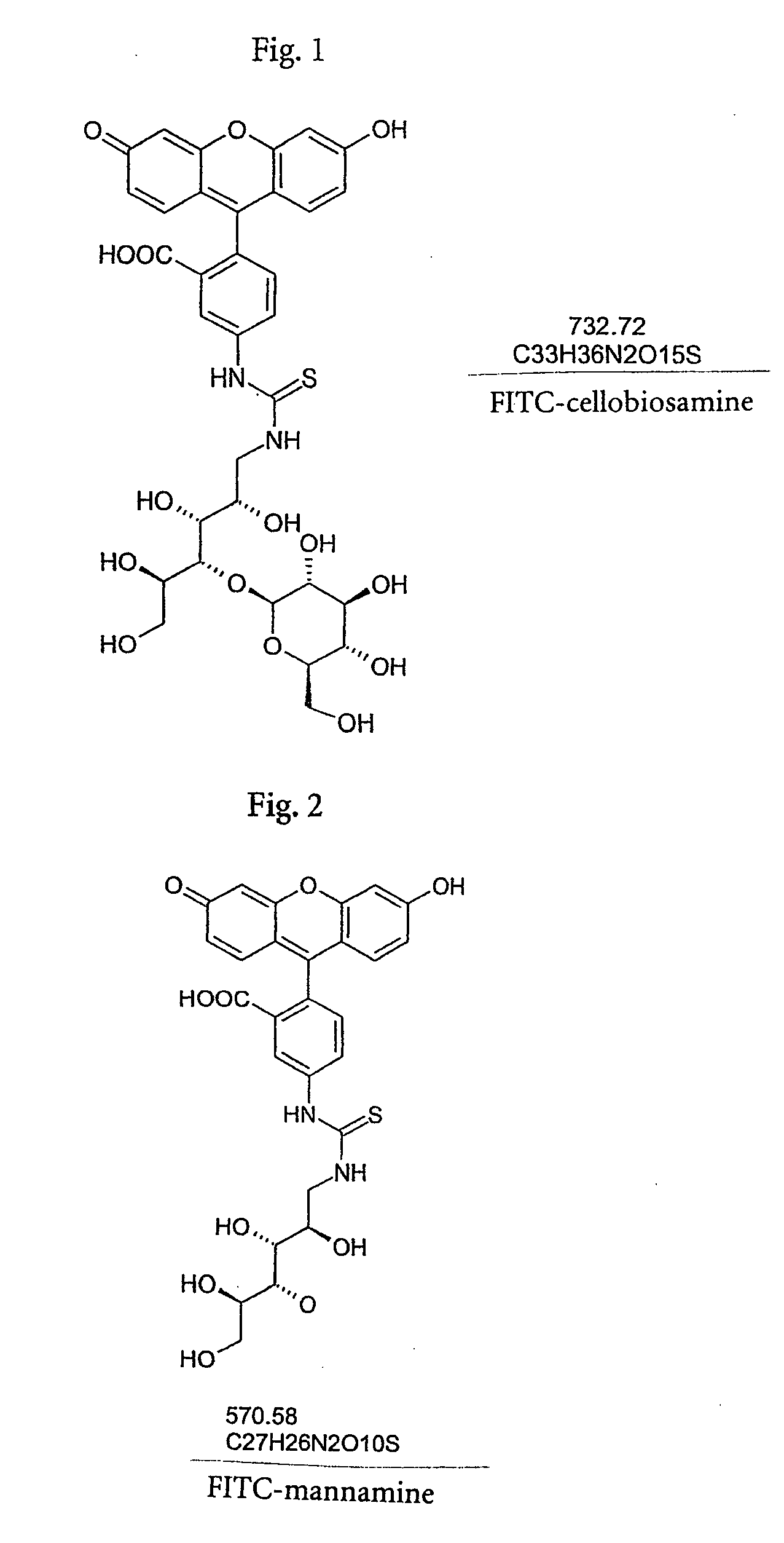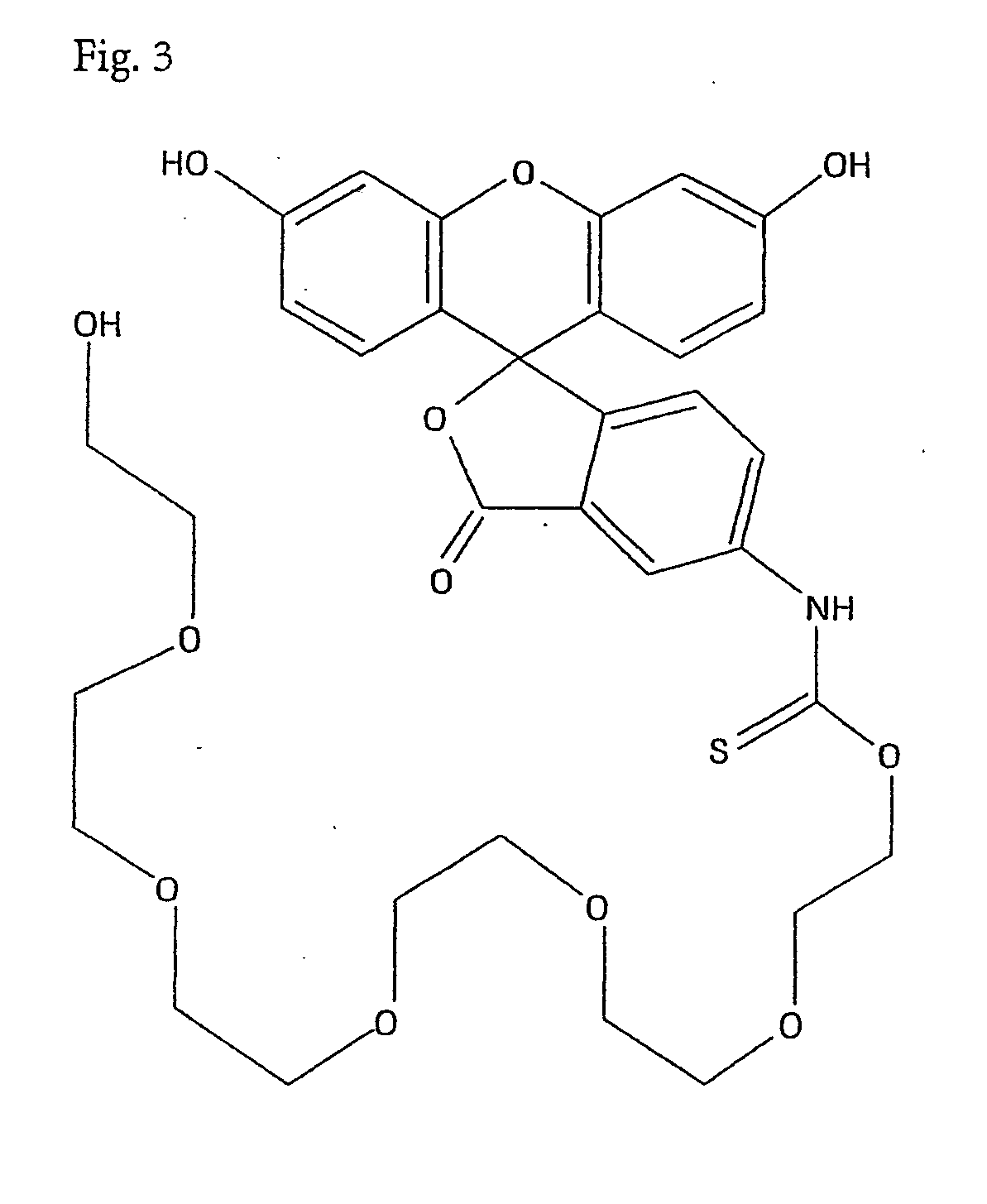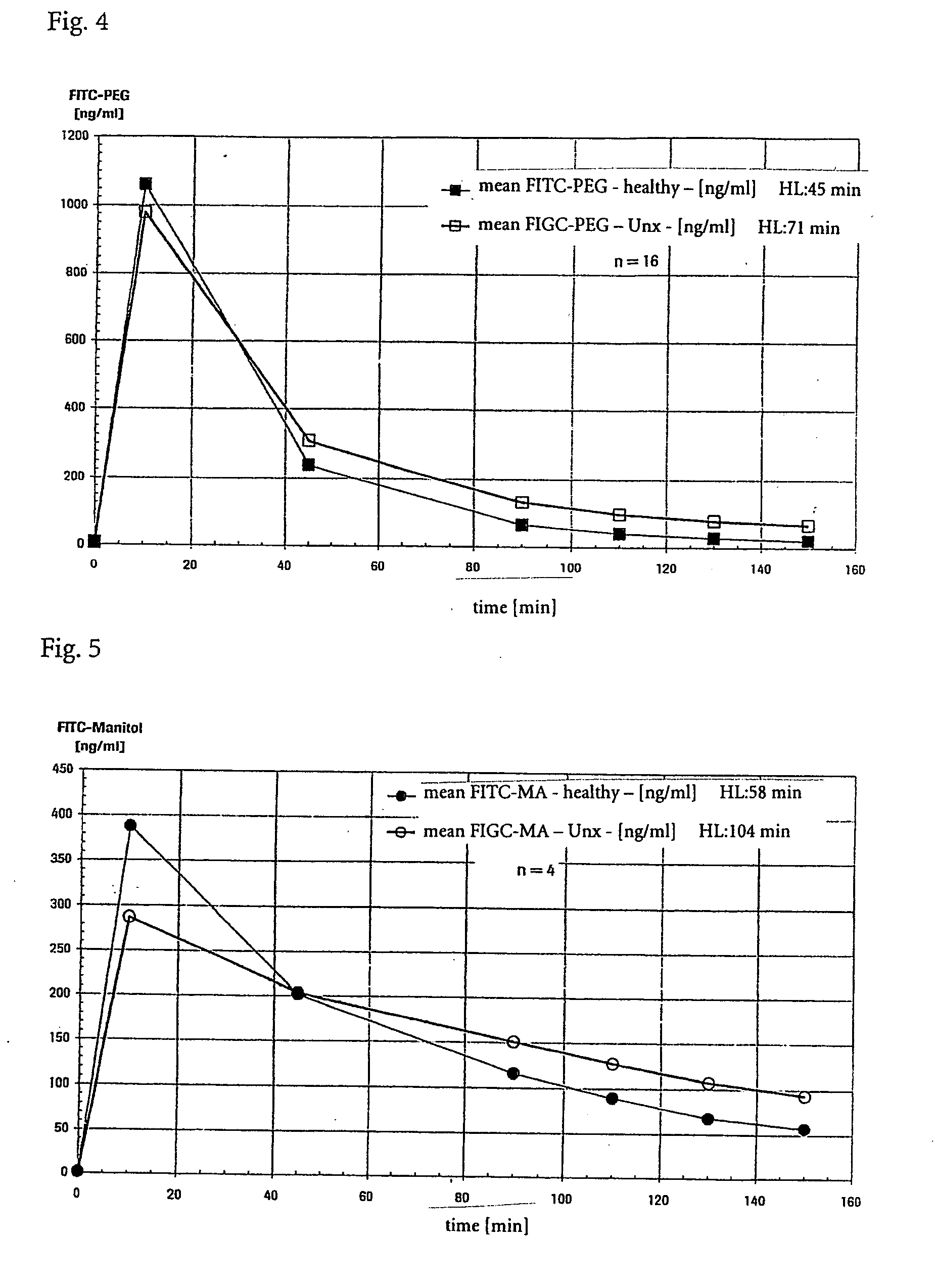Stiochiometrically defined dye-labelled substances for measuring glomerular filtration rate, the production thereof and their use
a technology of glomerular filtration rate and dye-labelled substances, which is applied in the direction of chemiluminescene/bioluminescence, instruments, material analysis, etc., can solve the problems of inulin hydrolytically attacked, poor soluble in water and crystallization, and partially degraded to fructos
- Summary
- Abstract
- Description
- Claims
- Application Information
AI Technical Summary
Problems solved by technology
Method used
Image
Examples
example 1
1.1 Preparation of Cellobiosamine
[0046] Cellobiosamine is prepared essentially according to J. Carbohydr. Chem. 1992, 11(7), 813-835.
[0047] 1-Benzylamino-1-deoxy-4-O-beta-D-glucopyranosyl-D-glucitol:D-cellobiose (1 g, 2.9 mmol) is dissolved in 1 ml water. The solution is heated to 60°. Benzylamine (0.5 ml, 4.6 mmol) is added dropwise at this temperature (ca. 3 minutes). After a further 15 minutes at 60° the solution becomes clear. It is heated for a further 3 hours, allowed to cool somewhat (50°), 4 ml methanol is added and it is then allowed to cool to room temperature. Sodium borohydride (0.23 g, 6.1 mmol) is added in a water bath (22°) and it is subsequently stirred for a further 36 hours at room temperature. It is diluted with water and methanol, the methanol is removed and the aqueous solution is extracted twice with ether. The aqueous solution is adjusted to pH 3 with 3 N HCl, concentrated twice with methanol, again taken up in methanol, filtered and evaporated to a syrup.
[...
example 2
2.1 Preparation of Mannamine
[0052] 0.178 mol hydroxylamine (released from 0.178 mol=12.36 g hydroxylamine hydrochloride with alcoholic sodium alcoholate solution) in about 200 ml ethanol is heated to 75° and 0.1 mol=18.0 g D-mannose is added in portions. It is kept for a further half an hour at this temperature, then allowed to cool overnight and the crystalline precipitate is suction filtered. After washing with 50 ml ethanol and drying in a vacuum, 18.7 g (96%) D-mannose-oxime, melting point 173° (decomp.) is obtained.
[0053] 2.14 g D-mannose-oxime in 21 ml ethyl acetate is hydrogenated with 80 mg platinum oxide for 24 hours at room temperature (H2 gas, the hydrogen uptake stops about six hours before completion). It is filtered, washed with copious amounts of acetic acid and water and the filtrate is concentrated. The mannamonium acetate obtained in this manner cannot be crystallized; thin layer chromatogram (TLC) (butanol / ethyl acetate / water=4:1:2): an unpolar secondary spot (n...
example 3
Preparation of Fluorescein Isothiocyanate Hexaethylene Glycol (FITC—HEG; FIG. 3)
[0057] 15 g NaH (60% dispersion in mineral oil) is added in portions to a solution of 2.6 g hexaethylene glycol (Aldrich) in 30 ml DMF in a nitrogen atmosphere at room temperature. In this process the temperature increases to about 40° C. The resulting solution is kept at this temperature for 30 min. Subsequently 3.0 g fluorescein isothiocyanate hydrochloride (99%, Acros, dissolved in 80 ml DMF) is added dropwise. The solution is stirred at 40° C. for 1 h and subsequently at room temperature overnight. After cooling to 5° C., a solution of 20 g NH4Cl in 100 ml H2O is added slowly. The solvent is removed in a vacuum and the residue is dissolved in 80 ml methanol. After adding 100 ml silica gel standard column material as an adsorbing agent, the solvent is evaporated. The residue is chromatographed using a silica column with a solvent consisting of an ethyl acetate / methanol mixture (8:2). Repeated chromat...
PUM
 Login to View More
Login to View More Abstract
Description
Claims
Application Information
 Login to View More
Login to View More - R&D
- Intellectual Property
- Life Sciences
- Materials
- Tech Scout
- Unparalleled Data Quality
- Higher Quality Content
- 60% Fewer Hallucinations
Browse by: Latest US Patents, China's latest patents, Technical Efficacy Thesaurus, Application Domain, Technology Topic, Popular Technical Reports.
© 2025 PatSnap. All rights reserved.Legal|Privacy policy|Modern Slavery Act Transparency Statement|Sitemap|About US| Contact US: help@patsnap.com



